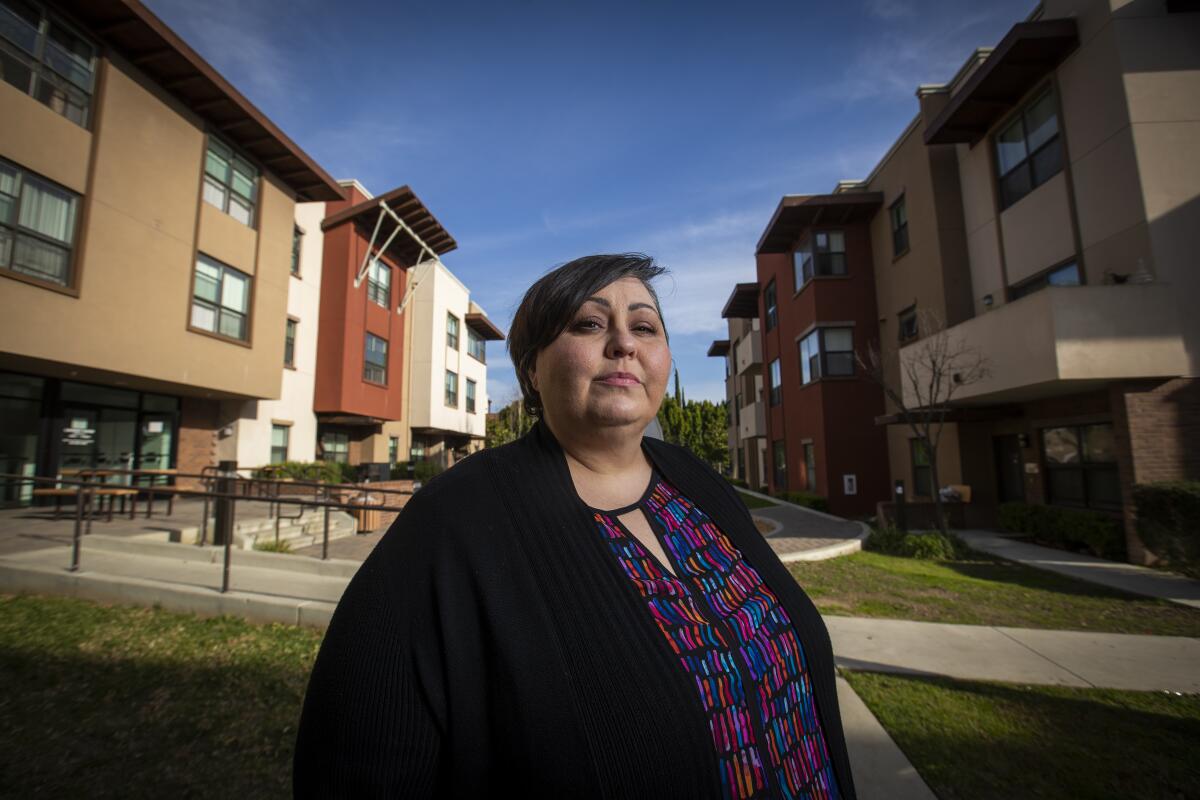Editorial: Here’s one reason California isn’t building enough affordable housing: bureaucracy

- Share via
At a time when California desperately needs more homes for its most vulnerable residents, the state still lacks a coherent strategy to get the most out of the dollars reserved for that purpose, and it still stymies affordable housing production with bureaucracy and red tape. Even worse, its failure to set priorities and properly oversee funding caused the state to lose out on $2.7 billion that could have gone toward affordable housing.
Those are the findings of a report released this week by State Auditor Elaine Howle. And they are deeply frustrating, particularly because it isn’t a new problem.
State leaders have known for years that affordable housing developers are forced to navigate cumbersome rules to get funding and permits. All that additional work just delays much-needed projects and makes them more expensive to build.
How expensive? A Times analysis earlier this year found the average cost to build one unit of affordable housing is $500,000. In some cases, the price tag was closer to $900,000 or $1 million per unit. No wonder the state is struggling to build enough affordable housing despite voter-approved state and local bond measures that have raised billions of dollars for it.
One big problem, according to Howle’s audit, is that the state lacks a coordinated plan to effectively use taxpayer and private dollars to support affordable housing. The state awards billions of dollars each year in tax credits, tax-exempt bond proceeds and loans to build affordable housing. Is that money well spent? Is the state building the greatest amount of affordable housing in the communities with the greatest need? Can the state get a bigger bang for its bucks? Nobody really knows.
Without a coherent plan, the state has mismanaged its money, Howle’s report said. In one example, the state’s Debt Limit Allocation Committee, which oversees the tax-exempt “private activity” bonds that government agencies sell to help finance affordable housing and other private projects that serve a public interest, allowed $2.7 billion in potential bond revenue to expire between 2015 and 2017. Such bonds, by the way, are repaid by the developers of the projects, not by the taxpayers, although the tax exemption comes at the state’s expense. As a result, the state left a lot of money on the table that could have helped much-needed homes get built.
California voters have been generous in supporting ballot measures for homeless and affordable housing projects. But taxpayers will not continue to back public investments in housing unless they have confidence that state agencies are using every available dollar efficiently and effectively.
Another problem is the state’s labyrinthine financing process. Developers are forced to navigate dozens of different funding programs controlled by different state agencies, which have different requirements and timelines. Affordable housing projects often combine as many as four to eight different sources of money to cover their costs. Getting through the gantlet of state applications and processes to line up funding can take years, which only increases the developer’s cost.
Gov. Gavin Newsom has pledged to help. He recently signed Assembly Bill 434, which will streamline nearly a dozen affordable housing programs into a single application and award process. His administration hopes that it will be significantly easier to fund an affordable housing project by the end of 2021.
That’s good because California has to ramp up construction. From 2015 through 2019, the state supported the development of 19,000 affordable units a year, on average. But to meet the need, 125,000 units a year must be built in the state through 2029, the state audit said.
Ultimately, cities and counties need to make it much easier to build all kinds of housing to serve a full range of incomes and needs. But it’s especially important to cut the reams of red tape that surround the permitting and construction of subsidized affordable housing. These are projects supported with taxpayer money, and each dollar should be used for the greatest good.
More to Read
A cure for the common opinion
Get thought-provoking perspectives with our weekly newsletter.
You may occasionally receive promotional content from the Los Angeles Times.










